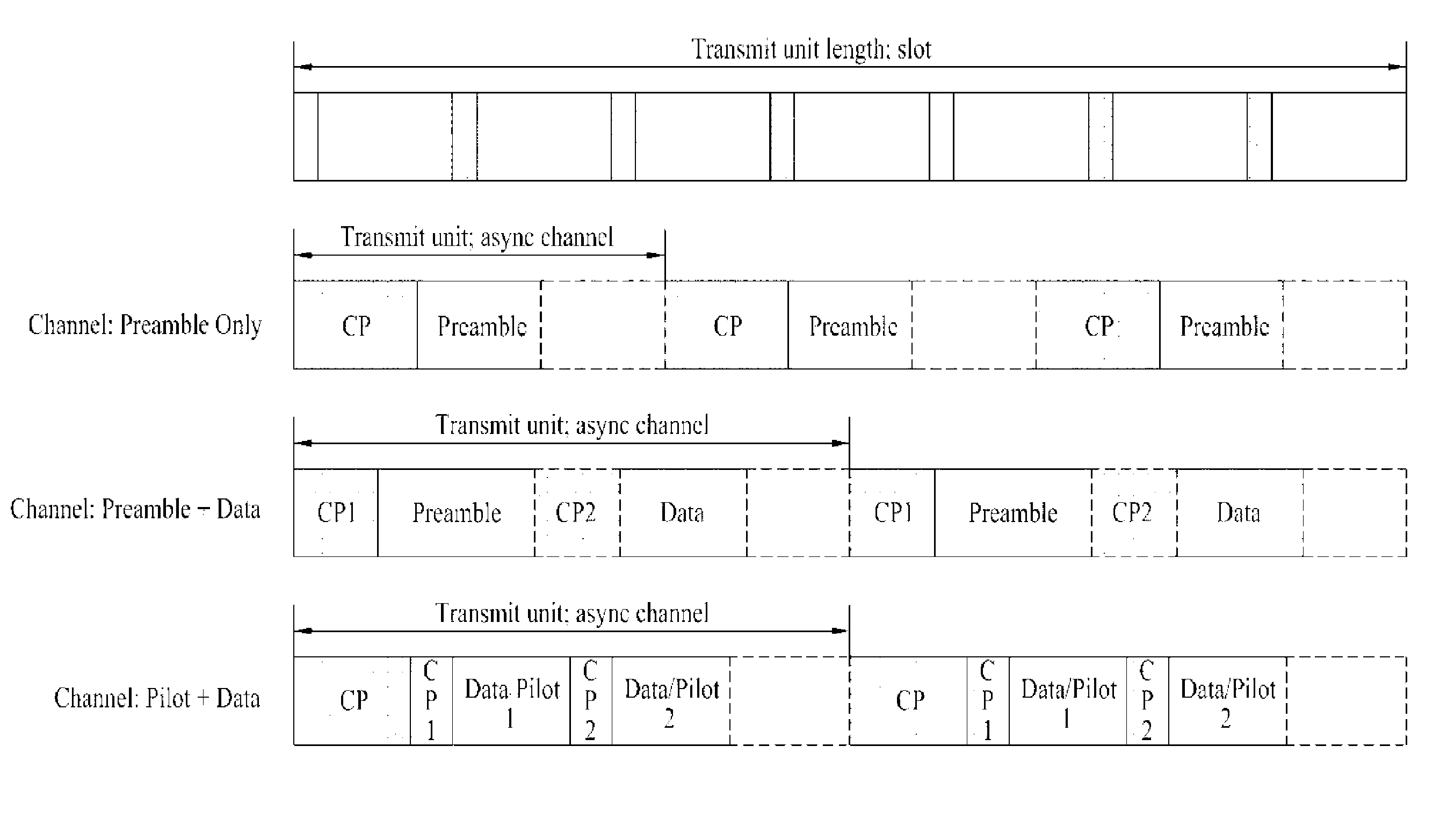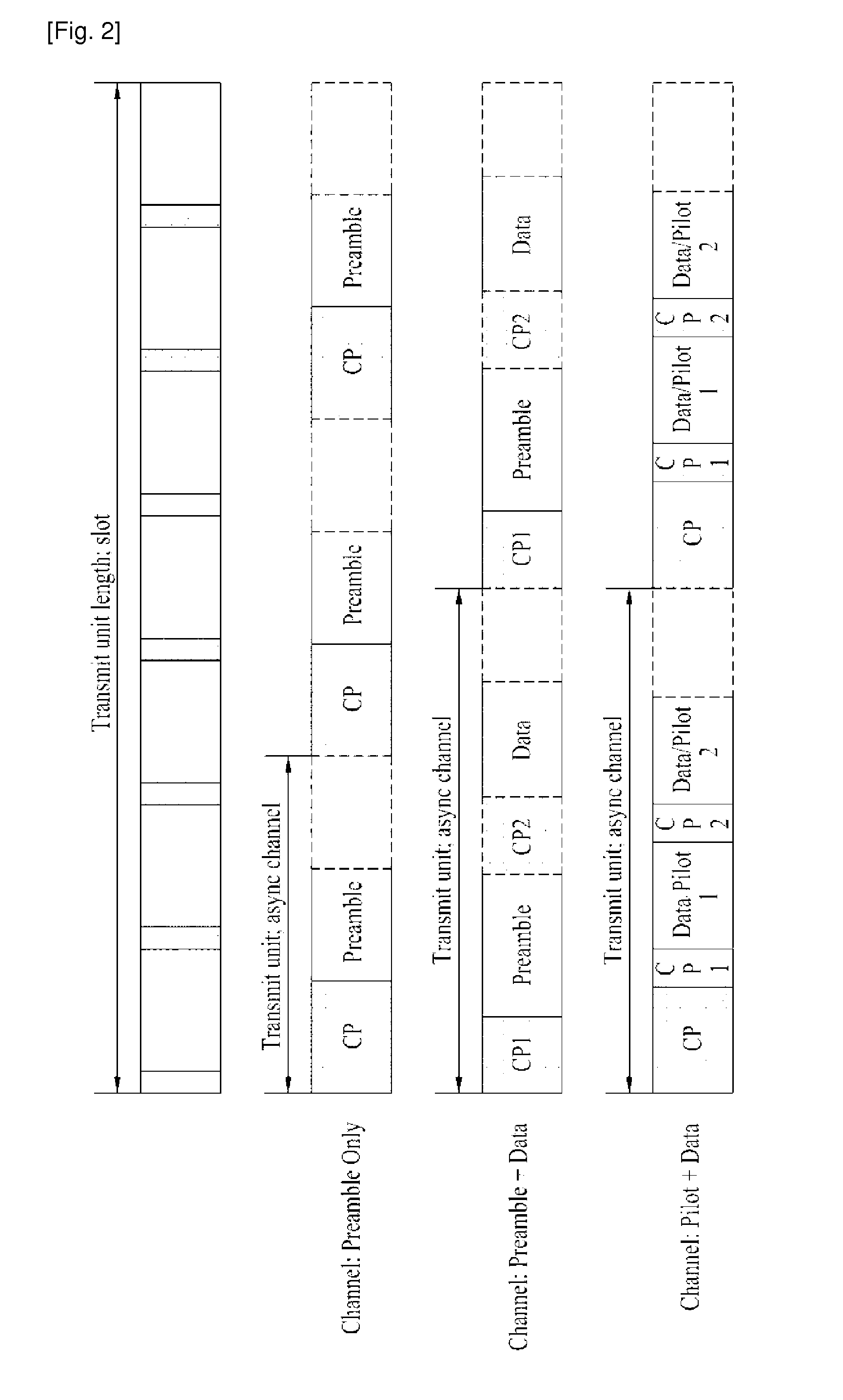Method of Transmitting Signal in a Wireless System
a wireless communication and wireless technology, applied in the field of wireless communication systems, can solve the problems of inability of cells to maintain such timing information and may not decide time synchronization, and achieve the effect of efficient transmission and receiving
- Summary
- Abstract
- Description
- Claims
- Application Information
AI Technical Summary
Benefits of technology
Problems solved by technology
Method used
Image
Examples
first embodiment
[0034]First of all, a method of transmitting an asynchronous channel according to the present invention will be described.
[0035]According to the first embodiment of the present invention, a mobile station transmits data or a control signal to a neighboring cell through a random access channel corresponding to an asynchronous channel of the related art.
[0036]The random access channel is supported by most of cellular systems and used to estimate uplink timing of the mobile station during system entry or neighboring cell entry. Generally, a base station notifies the mobile station of configuration of the random access channel through a broadcast channel while the mobile station selects a random one of sequences that can be used in the random access channel and transmits the selected sequence to the base station.
[0037]Examples of another method of using the random access channel include a method of using a part of sequences of a random channel access according to the related art and a m...
second embodiment
[0063]Next, a method of transmitting an asynchronous channel in accordance with the present invention will be described.
[0064]In the second embodiment of the present invention, the mobile station configures a new asynchronous channel and transmits data or a control signal to the neighboring cell through the new asynchronous channel.
[0065]The new asynchronous channel generated in accordance with the second embodiment of the present invention will be described with reference to FIG. 2 to FIG. 5.
[0066]If the neighboring cell is very small such as relay or femto cell, since very small path loss and very small round trip delay occur, more efficient channel structure can be used. In this respect, in the second embodiment of the present invention, if the neighboring cell is relay or femto cell, the mobile station configures an asynchronous channel easy to access the neighboring cell.
[0067]A structure of the asynchronous channel is varied depending on a size of a cell, a level of path loss,...
PUM
 Login to View More
Login to View More Abstract
Description
Claims
Application Information
 Login to View More
Login to View More - R&D
- Intellectual Property
- Life Sciences
- Materials
- Tech Scout
- Unparalleled Data Quality
- Higher Quality Content
- 60% Fewer Hallucinations
Browse by: Latest US Patents, China's latest patents, Technical Efficacy Thesaurus, Application Domain, Technology Topic, Popular Technical Reports.
© 2025 PatSnap. All rights reserved.Legal|Privacy policy|Modern Slavery Act Transparency Statement|Sitemap|About US| Contact US: help@patsnap.com



